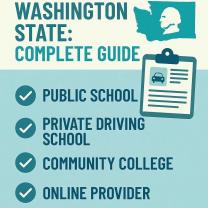What are learning objectives?
Learning objectives, also known as educational objectives or instructional objectives, are clear and concise statements that describe what learners should be able to accomplish after completing a specific learning experience, such as a course, lesson, or training program. Learning objectives serve as a roadmap for educators and learners, guiding the instructional process and helping to measure the effectiveness of the learning experience. Here are the key characteristics and purposes of learning objectives:
Characteristics of Learning Objectives:
Specific and Clear: Learning objectives are precise and unambiguous statements that define what learners should know, understand, or be able to do. They avoid vague or subjective language.
Measurable: Learning objectives are written in a way that allows for assessment and evaluation. They should be observable, so it's clear when a learner has achieved them.
Action-Oriented: Learning objectives typically begin with an action verb that describes a specific behavior or action the learner will demonstrate. Common action verbs include "identify," "analyze," "calculate," "synthesize," and "evaluate."
Focused: Each learning objective should target a single, specific outcome. Multiple objectives may be used within a course or lesson to cover different aspects of the topic.
Aligned: Learning objectives should align with the overall goals and outcomes of the educational program or curriculum. They ensure that each component of the program contributes to the larger educational goals.
Purposes of Learning Objectives:
Guidance for Instruction: Learning objectives provide instructors with a clear roadmap for designing and delivering instruction. They help instructors prioritize content and activities.
Communication: Learning objectives communicate to learners what they are expected to achieve. They provide transparency and clarity about course or lesson expectations.
Assessment: Learning objectives serve as the basis for assessment and evaluation. They help instructors design assessments that align with what was taught and measure whether learners have met the objectives.
Motivation: Clear objectives can motivate learners by providing a sense of purpose and direction. Learners are more engaged when they understand what they are working toward.
Feedback: Learning objectives can help provide feedback to learners. Assessments tied to objectives offer learners insight into their strengths and areas for improvement.
Curriculum Development: Learning objectives guide the development of curriculum and course materials, ensuring that content aligns with desired outcomes.
Quality Assurance: Learning objectives support quality assurance in education. They help ensure that programs are meeting their intended goals and outcomes.
In educational settings, learning objectives are typically written for various levels of instruction, from individual lessons to entire courses and programs. Effective learning objectives are critical for promoting a well-structured, meaningful, and measurable learning experience. They help both educators and learners understand what success looks like and provide a framework for achieving it.













